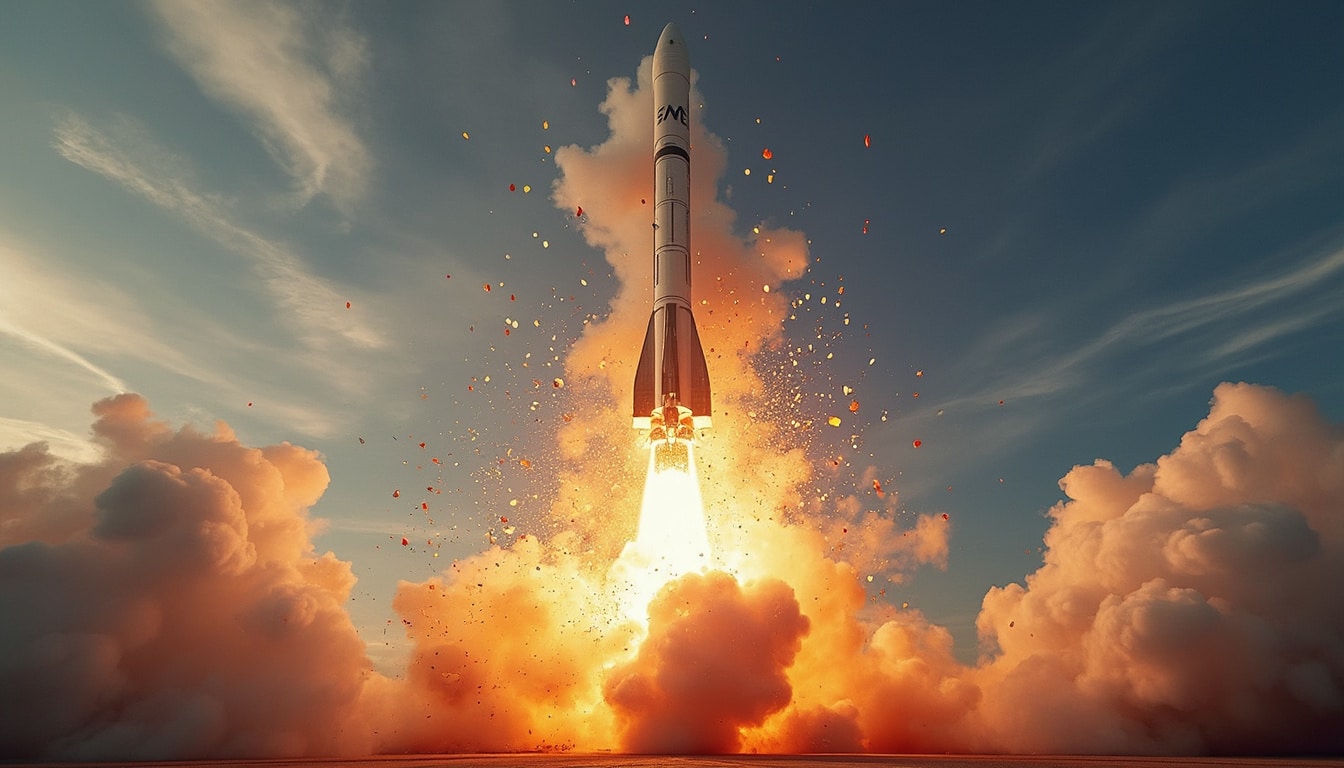The recent revelations surrounding the infamous Falcon 9 rocket explosion and its connection to a conspiratorial “sniper” theory have sparked significant intrigue among space enthusiasts and industry experts alike. As SpaceX, an avant-garde player in the aerospace sector, embarks on a vital journey to redefine space travel, the catastrophic event on September 1, 2016, serves as both a pivotal moment and a closely guarded secret. The incident, involving the loss of the Amos-6 satellite, not only brought the company to its knees momentarily but has also unearthed layers of complexity involving federal investigations, corporate rivalry, and technological innovation.
This narrative centers around the enigmatic nature of rocket failures, particularly how they can blur the lines between engineering error and potential sabotage. As we navigate through the complex web of investigation, federal involvement, and SpaceX’s internal processes, the sniper theory has become a captivating concept—drawing attention for both its audacity and its implications within the competitive landscape of the aerospace industry.
Examining the aftermath of the Falcon 9 failure provides insight into the rigorous scrutiny and extraordinary measures SpaceX pursued in response to the incident. From potential sabotage theories to competition with industry giants like Boeing and Lockheed Martin to the ongoing partnerships with NASA, the interplay of technology, ambition, and mystery will further illuminate the ongoing evolution of private space exploration. Every thrilling detail of this unfolding drama paints a vivid picture of a future where boundaries are continually pushed—both in space and on Earth.
The Falcon 9 Explosion: A Turning Point for SpaceX
The Falcon 9 rocket within the SpaceX framework was positioned as a critical player in the commercial spaceflight industry. On that fateful morning in September 2016, the atmosphere at SpaceX’s launch pad was bustling with anticipation. Engineers had been working diligently to perfect the intricate details necessary for a successful static fire test. The scenario was seemingly routine, but little did anyone expect a catastrophic failure. As launch director John Muratore recounted the incidents, the shock and chaos of the explosion unveiled an unexpected twist in what was anticipated to be a standard operational procedure. The rocket disintegrated dramatically, leaving onlookers in disbelief.

Understanding the Technical Failure
The immediate investigation revealed that a rupture of a helium tank within the upper stage of the rocket had precipitated the explosion. With no significant movement of parts prior to the disaster, the cause baffled engineers. In this scenario, the concept of sabotage was born—initially dismissed, but gradually gaining traction among SpaceX’s leadership. What might appear to be a simple technical failure evolved into a closely examined conspiracy, igniting speculation throughout the aerospace community.
This shift in focus to external factors prompted SpaceX to investigate furiously. A sniper theory emerged, raising eyebrows and debates regarding its plausibility. With circumstantial evidence linking the explosion’s first rupture to a nearby United Launch Alliance (ULA) facility, the narrative expanded into areas of corporate espionage and foul play.
The implications of such a theory not only challenged SpaceX’s engineering capabilities but also painted a portrait of the fierce competition in the space industry between companies like SpaceX, Boeing, Northrop Grumman, and others. The race for aerospace supremacy was fraught with intense rivalry, leading to heightened scrutiny of every move by competing firms.
The Sniper Theory: A Corporate Rivalry Unveiled
The sniper theory is perhaps one of the most fantastical narratives associated with the Falcon 9 explosion, but its exploration by SpaceX engineers highlights their commitment to finding answers, however unconventional the paths may seem. Founder Elon Musk, intrigued by the possibility of external sabotage, pushed for thorough investigation both internally and externally. His enthusiasm mirrored the high stakes involved in defeating competitors like ULA.
SpaceX’s Investigative Measures
To determine the validity of the sniper theory, SpaceX took unprecedented steps. Engineers conducted experiments on pressurized helium tanks to replicate the conditions of the explosion and sought permission to investigate nearby rooftops for potential evidence of a sniper. Such measures reflected not only the desperate pursuit of answers but also a strategic move to engage with federal authorities about the investigation’s findings.
These inquiries also included discussions with the Federal Aviation Administration (FAA) and the FBI, revealing the extent of collaboration between federal entities and SpaceX. The narrative shifted toward investigations often dominated by sensationalism, leading not just to speculation but concrete dialogues regarding operational safety within the aerospace sector.
The interconnectedness revealed by federal assistance indicates a significant turning point for SpaceX. With heavy reliance on government contracts and partnerships with NASA, the need for a strong track record of safety and compliance became paramount. The fallout from this incident catalyzed policy discussions that would transform industry protocols moving forward.
NASA’s Role in SpaceX’s Path
NASA has played a critical role in the evolution of private spaceflight, specifically through its partnerships with companies such as SpaceX and Boeing. Following the Falcon 9 explosion, NASA’s response was vital in shaping SpaceX’s recovery strategy. The repercussions of the failure not only shook the foundation of SpaceX but also raised immense concerns within NASA—considering astronauts would soon be relying on SpaceX’s technology for safe passage to the International Space Station.
Shifting Perceptions of Safety and Innovation
In a move distinct from traditional practices, SpaceX proposed a controversial “load and go” procedure that shifted the timing of astronaut boarding relative to fueling the rocket. This realignment prompted intense debates over safety regulations and standards within the aerospace community. NASA’s engineers and scientists found themselves plagued with doubts—testing conventional wisdom against SpaceX’s audacious approach.
The fallout from the incident underscored how safety concerns disproportionately weighted on SpaceX’s relationship with NASA and the broader implications for its future innovations. As the investigation unveiled the true cause of the explosion—a failed propellant-loading process—both organizations reassessed the operational frameworks needed to advance toward a new era of commercial space exploration.
The Fallout and Future Trajectories of Space Exploration

The ripple effects of the Falcon 9 explosion impacted not only SpaceX and NASA but also the broader landscape of commercial spaceflight. With competitors like Blue Origin, Virgin Galactic, Rocket Lab, Sierra Nevada Corporation, and Relativity Space continuously innovating, the space race remained dynamic and competitive. As SpaceX redefined its mission approach after the incident, the lesson of resilience and adaptability reverberated through the entire industry.
The Future of SpaceX and Commercial Spaceflight
In the aftermath, SpaceX displayed resilience. Despite the panicked moments and moments of uncertainty, the company surged back to achieve success, with significant advancements in subsequent launches. The evolution prompted a surge in spacecraft testing, innovative designs, and groundbreaking missions designed to revisit lunar exploration and crewed Mars missions.
NASA’s experience became a vital asset for future endeavors. Enhanced collaboration with commercial partners, improved safety guidelines, and rigorous checks on technological implementations ultimately led to a strengthened framework for space venture reliability. The complexities inherent in launching rockets, along with the gravity of human life at stake, reaffirmed the shared mission across state and private organizations.
The Falcon 9 incident surrounding the “sniper theory” may lie in the past, but its repercussions continue to unfold, shaping the course of space exploration, regulatory policies, and the dynamics of rivalry among giants. As the boundaries of space travel are pushed farther, society watches with bated breath to witness what thrilling journeys await beyond the horizon.
| SpaceX | NASA | United Launch Alliance | Boeing | Blue Origin |
|---|---|---|---|---|
| Leader in Commercial Launch Services | Government Agency for Space Exploration | Primary Competitor to SpaceX | Contractor for NASA Projects | Innovator in Space Tourism |
| Innovative Rocket Technologies | Pioneer of Human Spaceflight Programs | Aerospace Conglomerate Focused on National Security | Established Spacecraft Developer | Emerging Player in Spaceflight |




Leave a Reply